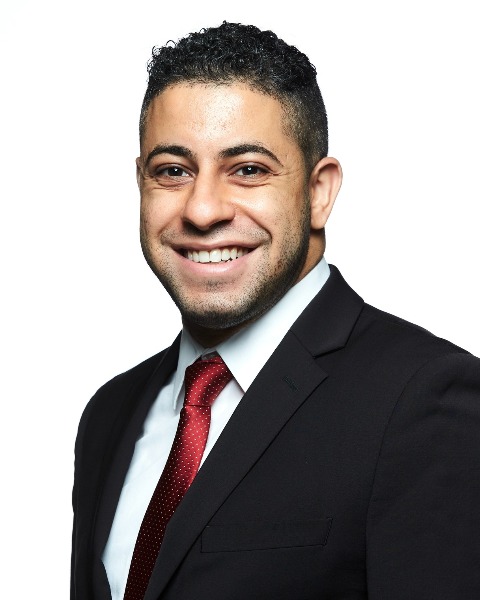Orthognathic Surgery
(25) An Acoustic Speech Analysis of Patients Before and After Orthognathic Surgical Intervention Using Praat
Thursday, September 21, 2023
1:30 PM - 3:00 PM PDT

Odai Abushanab, DMD
PGY 4 Resident
Rutgers
Springfield, New Jersey, United States
Presenting Author(s)
Disclosure(s):
Odai Abushanab, DMD: No financial relationships to disclose
Background: Orthognathic surgery along with orthodontic treatment can be used to correct for dental malocclusion in patients with concomitant maxillo-mandibular skeletal deformities. Prior studies have shown favorable post-operative speech changes following corrective orthognathic surgery with non-cleft patients.
Purpose: The purpose of this study was to investigate speech changes with non-cleft patients undergoing corrective orthognathic surgery by using PRATT voice analysis software (Boersma, Paul (2001). Praat, a system for doing phonetics by computer. Glot International 5:9/10, 341-345) to identify speech changes that may arise post-operatively. Sibilant sounds were found to be most sensitive to changes in the oral cavity, tongue, and jaw position, and were thus used to assess speech changes.
Study design, setting, sample: The study followed eight patients randomly selected during evaluation for orthognathic surgical treatment from the Oral and Maxillofacial Surgery department at the University Hospital located in Newark and from the Oral Surgery clinic at Rutgers School of Dental Medicine. The selected patients were adult English-speaking non-cleft patients undergoing orthodontic treatment with plan for corrective orthognathic surgery.
Predictor/exposure/independent variable: Values for the center of gravity and frequency formant for /s/, /sh/ and vowels were recorded prior to surgical intervention (T0) and compared with values attained three months after orthognathic surgery (T1) using PRAAT voice analysis software.
Main outcome: PRAAT was used to define and calculate eight articulatory parameters including sibilant-vowel time, Formant Frequency F1 for sibilants and vowels, F2 for vowels, center of gravity of sibilants, vowel duration and sibilant duration.
Analyses: Parameters at T0 and T1 were compared statistically using paired t-test, nonparametric related samples Wilcoxon signed rank test, and related samples Friedman’s two-way analysis of variance by ranks. Significant level was set at p=0.05. The inter-rater reliability was measured.
Results: The ICC for inter-rater reliability was 0.99 indicating excellent agreement. Post-operative analysis of /S/ was significant for F1 (p <.001) and not significant for COG or duration. Results for /SH/ were significant for COG (p= 0.024 and p= 0.043) and for F1 (p < 0.001, and p=.009 for both tests); no significant difference was found for duration. For vowels, the results were significant for both analyses of F1 (p < 0.001 and p=.008); F2 was significant for the Wilcoxon test (p=0.016) but not for Friedman’s analysis (p=0.059.) The results for the sibilant-vowel transition was significant for the related samples Friedman’s two-way ANOVA test (p=0.002). The paired sample t-Test showed significant differences for the COG and F1 of both /S/ and /SH/ sibilants, and for the F1 and F2 for vowels in the one- sided and two- sided tests.
Conclusion: Compared to previous studies investigating similar outcomes, our study demonstrated a higher intra-rater reliability. The results supported the initial hypothesis
providing an adequate relationship between corrective orthognathic surgery in non-cleft patients and changes in speech with evident improvements in sibilants. There was some evidence suggesting a delayed adjustment of vowels produced in the anterior segment of the oral cavity which are dependent on tongue control and the function of the articulating anatomical structures. It is still unclear what the adequate time for full recovery and adjustment post-surgery is, although it is evident that most patients were able to produce perceptually normal speech at the 3-month follow-up. Although this study provides evidence to support post-operative improvement in speech, it is critical for the clinician to be vigilant for any evidence of speech deterioration and to appropriately refer the patient to a speech pathologist. The present study is still ongoing and will continue to investigate the long-term effect of orthognathic surgery on speech at a 1-year post-surgical follow-up.
